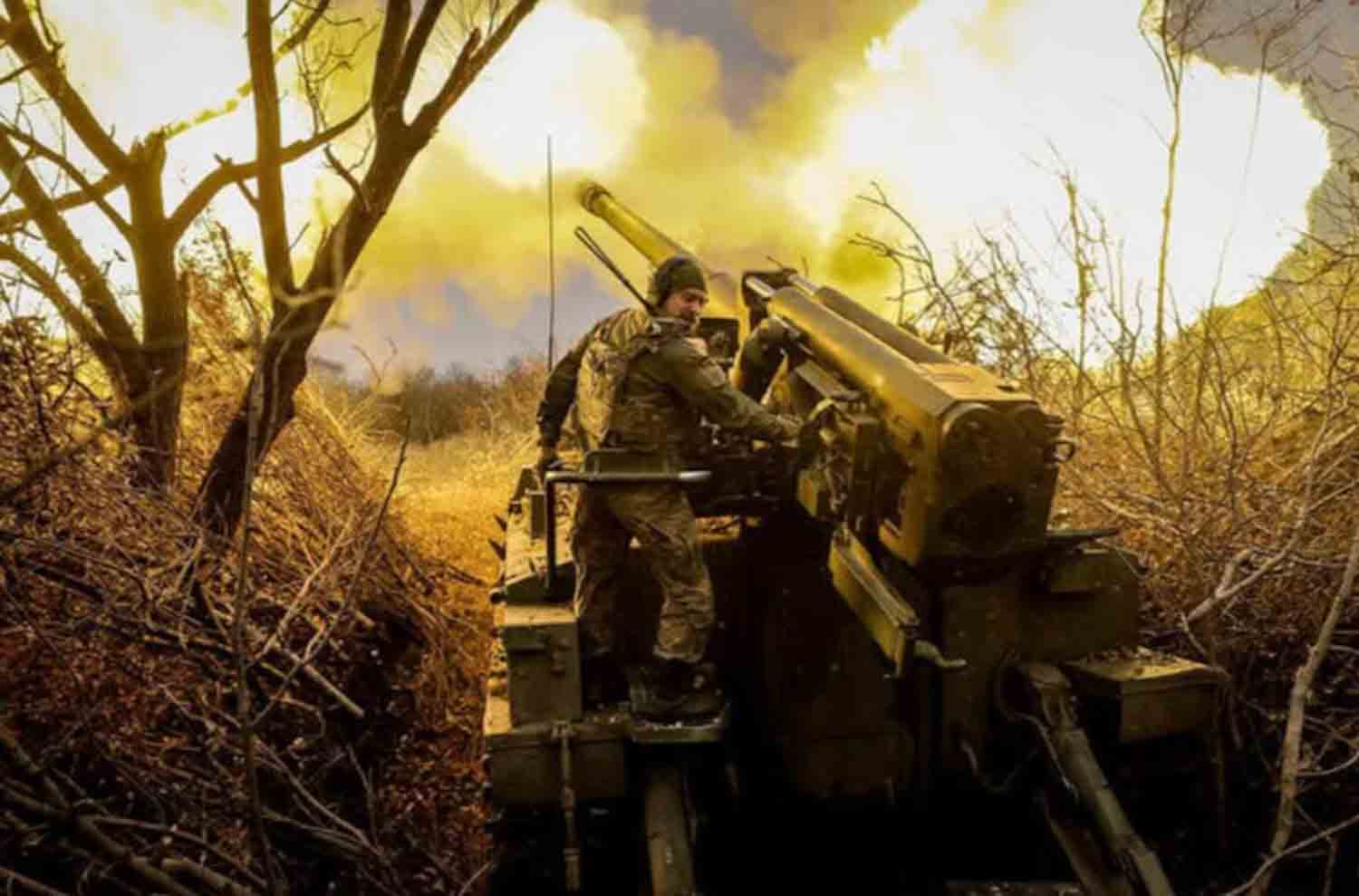Russia’s deployment of a nuclear-capable ballistic missile on Thursday represents a significant escalation in the ongoing conflict in Ukraine. This action signifies a critical and potentially perilous juncture in Moscow’s relations with the West.
Vladimir Putin‘s announcement of using a ballistic missile equipped with multiple warheads in offensive operations marks a notable shift from the long-standing Cold War principle of deterrence. Experts indicate that ballistic missiles with multiple warheads, referred to as “multiple independently targeted reentry vehicles” (MIRVs), have never been employed in combat situations before.
Hans Kristensen, director of the Nuclear Information Project at the Federation of American Scientists, stated, “To my knowledge, yes, it’s the first time MIRV has been used in combat.”
Historically, ballistic missiles have served as the foundation of deterrence, embodying the concept of “mutual assured destruction” (MAD) during the nuclear era. The rationale behind this strategy is that if a few missiles survive an initial nuclear strike, the remaining arsenal would possess sufficient capability to devastate several major cities of the aggressor, thereby ensuring that neither side can evade the repercussions of nuclear conflict.
In this context, ballistic missiles were intended to act as guardians against a future where nuclear weapons would never again be utilized in hostility. However, analysts, including Kristensen, contend that the introduction of MIRVed missiles could provoke, rather than deter, a preemptive strike.
The significant destructive potential of Multiple Independently Targetable Reentry Vehicles (MIRVs) positions them as both potential first-strike assets and primary targets for such strikes, as noted by Kristensen and his colleague Matt Korda from the Federation of American Scientists in a study released in March.
This is due to the fact that it is generally easier to neutralize multiple warheads before their launch rather than attempting to intercept them as they descend at hypersonic speeds toward their intended targets.
A recent statement from the Union of Concerned Scientists, a nonprofit organization based in the United States that advocates for scientific integrity, highlights a concerning “use them or lose them” dynamic. This scenario creates a compelling incentive for a preemptive strike during a crisis. The statement emphasized that a first strike aimed at eliminating a nation’s MIRVed missiles could severely impair that nation’s capacity for retaliation.
Footage from Thursday’s Russian missile strike illustrated multiple warheads descending at various angles toward their target, necessitating the interception of each warhead with an anti-missile system—a formidable challenge even for the most advanced air defense technologies.
Although the warheads that targeted the Ukrainian city of Dnipro on Thursday were not nuclear, their deployment in conventional military operations is likely to heighten tensions in an already precarious global environment.
Notably, Russia provided advance notice to the United States regarding the missile launch on Thursday. However, even with this prior warning, any subsequent actions by Putin’s administration are bound to escalate anxieties throughout Europe, prompting many to question whether the concept of deterrence has been fundamentally undermined.
MIRV Technology Around the Globe
MIRV technology is not exclusive to Russia and the United States. According to the Center for Arms Control and Non-proliferation, China has integrated this capability into its intercontinental ballistic missiles. Additionally, the United Kingdom and France, alongside Russia and the US, have long equipped their submarine-launched ballistic missiles with MIRV technology.
New entrants are also emerging in the MIRV landscape. Reports indicate that Pakistan conducted a test of a missile featuring multiple warheads in 2017, while India announced a successful test of a MIRVed ICBM earlier this year.
Analysts express greater concern regarding land-based MIRVs compared to those deployed on submarines. The stealthy nature of submarines makes them difficult to detect, whereas land-based missiles, particularly those housed in fixed silos, are more easily located and thus more vulnerable to attack.
In their March report, Kristensen and Korda highlighted the dangers associated with the expanding group of nations possessing MIRV capabilities, describing it as indicative of a troubling trend in global nuclear arsenals and an emerging arms race.
India’s announcement of MIRV success during a test that same month served as a significant warning sign, they noted.
“This follows China’s deployment of MIRVs on certain DF-5 ICBMs, Pakistan’s apparent interest in MIRVs for its Ababeel medium-range missile, and North Korea’s potential pursuit of similar technology. Furthermore, the United Kingdom has opted to increase its nuclear stockpile to facilitate the deployment of additional warheads on its submarine-launched missiles,” Kristensen and Korda stated.
They contend that an increase in MIRV warheads across various nations’ arsenals would significantly undermine crisis stability, encouraging leaders to launch their nuclear weapons preemptively during a crisis.
“A global landscape where nearly all nuclear-armed states possess substantial MIRV capabilities presents a far greater danger than our current geostrategic situation,” they concluded.
Discover more from Defence Talks | Defense News Hub, Military Updates, Security Insights
Subscribe to get the latest posts sent to your email.





